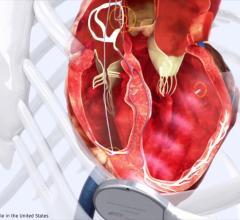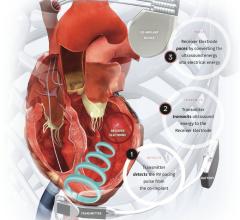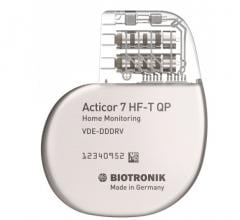
August 21, 2017 — Biotronik announced U.S. Food and Drug Administration (FDA) approval and commercial availability of Edora HF-T QP, an MR conditional quadripolar (QP) cardiac resynchronization therapy pacemaker (CRT-P) with MRI (magnetic resonance imaging) AutoDetect technology.
With a volume of 15 cc, Edora HF-T QP is the smallest MR conditional CRT-P available in the U.S., according to Biotronik, with longevity of nearly 10 years, reducing the frequency of device replacements for heart failure patients. Edora HF-T QP features MRI AutoDetect, Closed Loop Stimulation (CLS) and Biotronik Home Monitoring with automatic, daily transmission verification.
In recent studies, Biotronik Home Monitoring was associated with a greater than 50 percent reduction in mortality due to heart failure2 and a 36 percent reduction in hospitalization for worsening heart failure.3
“Patient care is a constant journey. It doesn’t end when the patient leaves my office or recovers from a procedure. As healthcare providers, we must think beyond today and help ensure patients are appropriately cared for throughout their lifetime,” said Roderick Tung, M.D., a cardiac electrophysiologist in Chicago. “MR conditional CRT-Ps that can be programmed to automatically switch to MRI mode when they enter the MRI environment are another significant step in delivering the best possible care throughout the patient journey. This technology eliminates an office visit for patients and decreases administrative burden for providers. The impact is significant, especially in institutions that perform cardiac MRI for advanced ventricular care."
Biotronik’s MRI AutoDetect technology is designed to improve patient safety by minimizing the time the pacemaker device is in MRI mode and remedying logistical programming challenges for physicians and health systems. Once activated by a clinician, MRI AutoDetect automatically recognizes when a patient enters an MRI field and changes the device programming to MRI mode.
The Biotronik Home Monitoring system includes the Heart Failure Monitor Online, a summary of nine long-term heart failure statistics including thoracic impedance. When combined with daily updates, this allows physicians to continuously monitor and evaluate patients’ heart failure status. Equipped with comprehensive patient monitoring and easily accessible statistical trends, physicians can review individual patient data quicker, leading to early intervention and better outcomes.
For more information: www.biotronik.com


 May 22, 2023
May 22, 2023 








